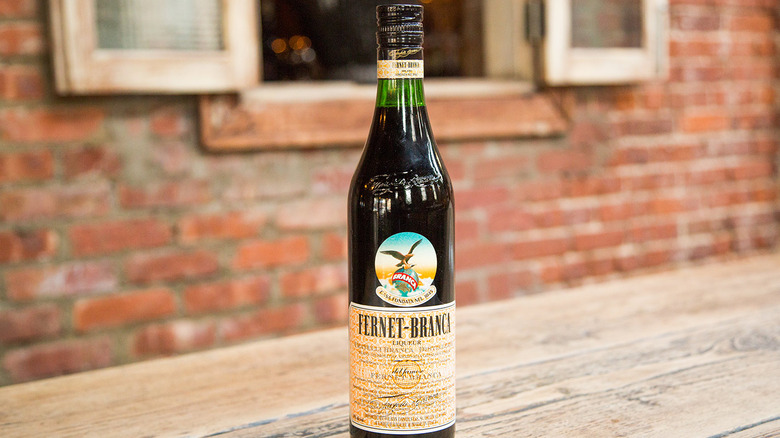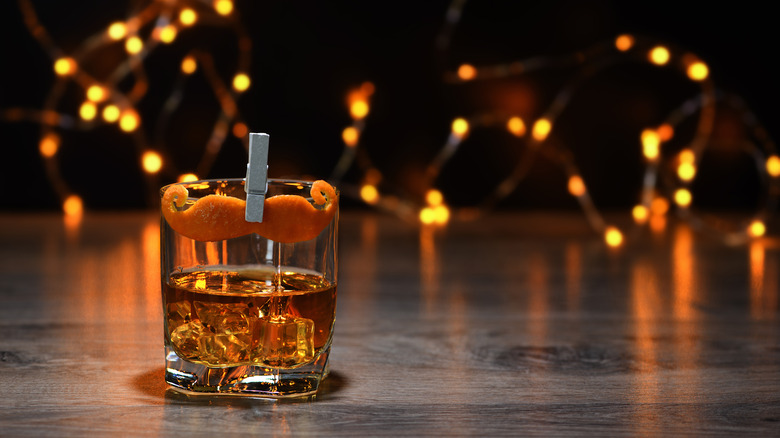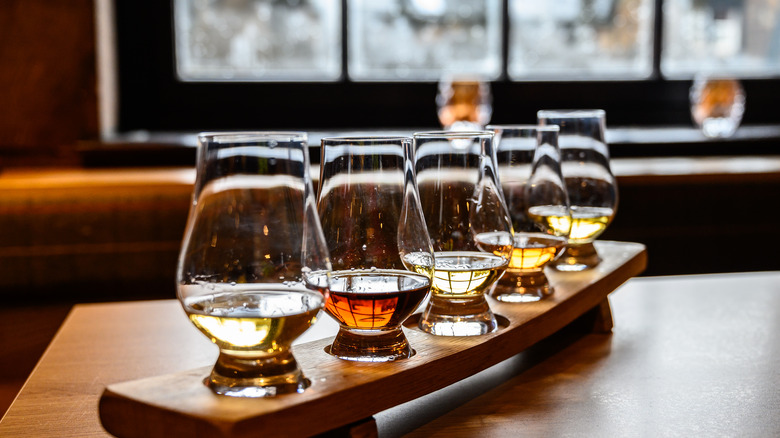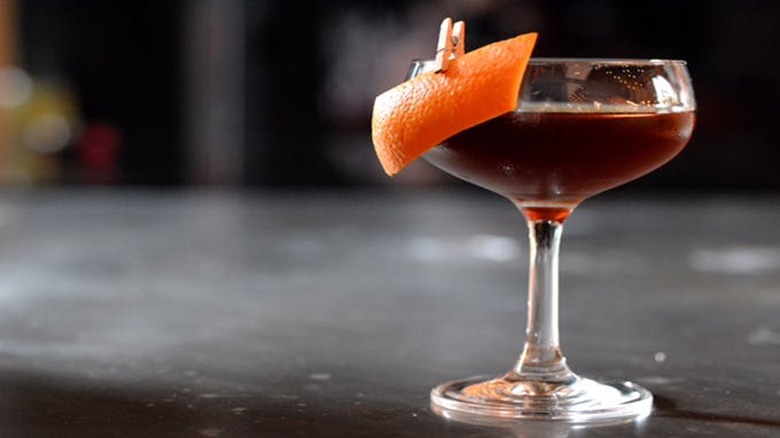What Is Fernet Italian Liqueur?
Your guide to the bitter Italian liqueur taking America by storm
Stroll into any bar from San Francisco to New York City, and you're bound to find more than a few folks tossing back shots of a curious, caramel-hued liqueur. A waft of the stuff brings mentholated, herbaceous notes, an earthy mix of woodsy cologne, tea-tree oil and unsweetened cough medicine. "Hmm," you might say to yourself. "It's too dark to be whiskey, not opaque enough for rum, and nobody's ordered a sweet vermouth since Andie MacDowell in Groundhog Day . . . so what the heck is this stuff?"
It's fernet, a 19th-century Italian liqueur that's finally washing up on American shores.
What's in It
Fernet is classified as an Italian (why it's pronounced "fer-net," not "fer-nay") bitter or amaro, a spirit made with a combination of herbs and spices said to have medical properties. Other popular liqueurs in this family include Amaro Montenegro, Cynar and Campari. They do a great job of settling the stomach, which is why some are referred to as digestifs. While bitters come in all shapes and sizes, fernet is a bit boozier than most, weighing in at around 40 to 45 percent alcohol. These guys can be flavored with any number of natural additives, including rhubarb, chamomile, tree barks, cardamom, aloe, saffron, myrrh, gentian root, orange peel—you name it, odds are it's made its way into at least one bitter bottle.
How It's Made
You might have noticed we haven't yet mentioned anything about distilling. That's because distillation, a method in which evil geniuses transform fermented liquid into hard liquor by boiling it into steam and then cooling it down (basically), isn't relevant for most fernet producers. Instead, they bring in a premade flavorless base liquor and infuse it like a tincture with a special combination of botanicals. It takes a lot of time and effort, but, damn, if it ain't worth it.
Where It Comes From
Order up a fernet from your local and nine times out of 10, your friendly barkeep will most likely reach for a bottle of Fernet-Branca. The iconic Italian company has been cranking out the good stuff, the brainchild of Milan native Bernandino Branca, since 1845. Though the specific recipe is closely guarded, the brand's website does reveal that its 27 herbs, flowers, roots and plants are sourced from different continents: aloe from South Africa, Chinese rhubarb and galingale from Southeast Asia, gentian root from France, chamomile from Argentina, and so on). After it's sufficiently flavored, Fernet-Branca is stored in oak barrels for at least one year, a process that deepens its aroma and imparts its distinctive reddish-brown iridescence.
Photo: Courtesy of Fernet-Branca
According to legend, fernet is named after Dr. Fernet, a Swedish physician who, also according to legend, is completely made up. Branca and his business partners promoted their elixir as a wonder drug, capable of curing stomach bugs, various nervous disorders and even cholera—the mythical doctor schtick helped validate these allegations.
Those health-conscious claims, in fact, gave fernet its first taste of stateside prominence. Because it was officially labeled as a medicinal product (i.e., not alcohol), bottles upon bottles were able to evade Prohibition's mighty wrath, wooing booze-starved Americans in cities and states with less rigid liquor laws. San Francisco, in particular, took to the stuff, thanks to its sizeable Italian population and generally lax drinking culture. To this day, the city remains the bitter's biggest fan, singularly draining upward of 35 percent of the country's supply.
While Fernet-Branca is by far the most recognizable brand on the market, it's definitely not the only one. A growing crop of American small-batch producers have begun throwing their hats into the bitters game. Chicago's Letherbee, Denver's Leopold Bros, SF's Fernet Francisco and Brooklyn's Arcane Distilling are all making excellent versions of the European staple.
Photo: Courtesy of Arcane Distilling
How You Drink It
Despite its palate-punching potency, fernet is a surprisingly versatile liqueur. Many South American devotees, especially those hailing from Argentina where Fernet-Branca operates a satellite plant, combine it with cola for a light, bubbly refresher. In the states, it's often consumed straight, either via shot or sipped at room temperature. It's very popular among bartenders, as goes down smooth and its medicinal effects can help ease digestion after a long day (or, as it were, a long night). And come last call, just about every bar in San Francisco doles out rounds of bartender's handshakes, shots of fernet served with ginger ale kickers.
Other uses include stirring a touch of fernet into coffee or serving it alongside an espresso for a balanced after-dinner treat, the beverage's sharp, citrusy notes playing off each other in soothing harmony. And, of course, generations of inventive mixologists have experimented with the piney potion, swapping it in for other bitters in cocktail classics, like spritzers, Manhattans and Negronis—or coming up with their own concoctions entirely. The Hanky Panky, one of the world's top fernet-spiked cocktails, was created back in 1903 by Ada Coleman, then a bartender at London's swanky Savoy Hotel. Finished with a sliver of orange peel, the savory, cheekily titled blend of sweet vermouth, dry gin and fernet was a revelation in a glass.
Photo: Courtesy of Drift Fish House & Oyster Bar
Forbidden Root, a neighborhood brewery in Chicago, has even collaborated with Fernet-Branca on a special, limited-edition beer called Fernetic. The boozy imperial black ale was inspired by Fernet-Branca and brewed with many of the original recipe's 27 flavor components. The beer's roasty, coffee-tinged aroma and soft, velvety body serves as the perfect backbone for the liqueur's minty bite. And at 8.4 percent ABV, a single pint of Fernetic is basically an all-in-one boilermaker.
No matter how you prefer to drink fernet, though, we strongly suggest you hit up the next bar you come across and order up a round. And, while you're at it, offer to buy your bartender a shot, too—we're positive they'll appreciate it.
Correction: Fernet is not, in fact, considered a low ABV beverage.
During In Good Spirits month, we're going behind the bar to find out what separates aperitifs from digestifs, which It cocktails the world's top bartenders crave and how to turn your home into the hottest speakeasy in town.




